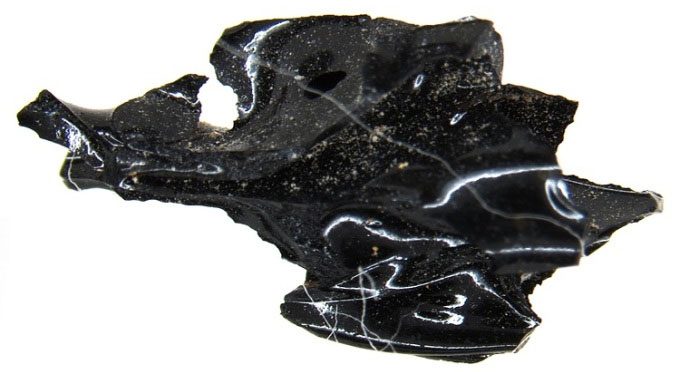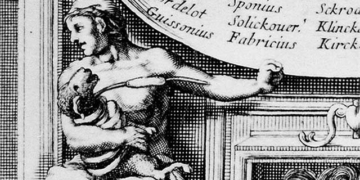The volcanic eruption that wiped out the Roman town of Pompeii generated a hot gas flow with temperatures reaching 550 degrees Celsius, high enough to turn human brains into glass.
According to a new study published on April 6 in the journal Scientific Reports, the intense heat released in a brief period caused the nearby town of Herculaneum to experience temperatures as high as 550 degrees Celsius, leading to instantaneous fatalities. The research team from Roma Tre University analyzed charred wood samples from various sites in Herculaneum, which is located closer to Mount Vesuvius than Pompeii, to reconstruct the thermal event that occurred following the eruption in 79 AD. Based on the carbonization traces of the samples, they hypothesized that the town was initially engulfed by a hot gas flow known as pyroclastic density current (PDC).

Fragment of a human brain vitrified within the skull of a man in Herculaneum. (Photo: Pier Paolo Petrone).
The researchers explain that the initial PDC swept through Herculaneum at temperatures exceeding 550 degrees Celsius, as reflected by the samples collected on the main streets Collegium Augustalium and Decumanus Maximus. Following this initial event, a debris flow buried the town under a layer of volcanic ash 20 meters thick, at lower temperatures.
Due to the fleeting nature and extreme temperatures associated with the initial explosion, the entire event left only a few dozen centimeters of ash on the ground, which helps explain why it had never been discovered before. However, the destructive power of a dilute PDC can be observed in more recent volcanic eruptions, such as in Martinique in May 1902, where nearly 30,000 people died instantly due to this type of gas flow.
Although direct evidence of a dilute PDC in Herculaneum has never been recorded, the research team states that there are many clues found in the remains of the victims. For instance, many bodies in Pompeii were found in a position called pugilistic attitude after death, while victims in Herculaneum did not display such postures due to their soft tissues being destroyed by the extreme heat.
The discovery of a vitrified intact brain inside the skull of a resident from Collegium Augustalium provides clearer insights. According to the research team, the brain could only turn to glass if the thermal event was brief enough that the tissue did not completely vaporize. The preservation of the cerebellum depended on whether the subsequent debris flows were cool enough for ash to accumulate.
After reconstructing the events following the eruption, the researchers noted that these findings carry significant implications for residents living in the nearby city of Naples if Vesuvius were to erupt again. If a dilute PDC forms, the survival of the population would depend on their ability to shield themselves from the hot gas flow in shelters. This would allow those who did not manage to evacuate in time to survive and wait for rescue.





















































